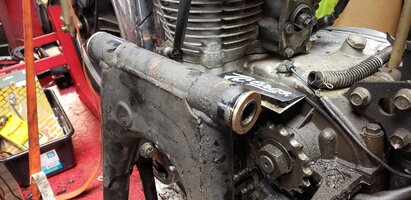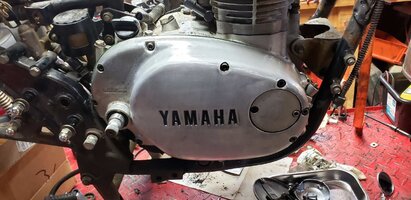Wirenutt
XS650 Addict
Yeah, that OEM sump screen isn't ripped too badly, I do plan on some JB Weld action on it after I get it cleaned up real good. The OEM screen seems to have a lot more surface area to catch the bits that find its way to the sump.
As regards to the brushes, I scan ebay myself from time to time and I'll grab an OEM set if I run across it. I took the photo the way I did so people unfamiliar with these bikes can see what the the wear indicator is supposed to look like.
It appears a lot of the bike, especially the engine, are the way they were when it left the factory. The case screws looked "virgin," like they've never been off. The only thing I've come across so far that wasn't factory was RTV on the valve access covers.
As regards to the brushes, I scan ebay myself from time to time and I'll grab an OEM set if I run across it. I took the photo the way I did so people unfamiliar with these bikes can see what the the wear indicator is supposed to look like.
It appears a lot of the bike, especially the engine, are the way they were when it left the factory. The case screws looked "virgin," like they've never been off. The only thing I've come across so far that wasn't factory was RTV on the valve access covers.



